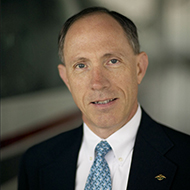Learning to fly is an intense experience that creates a bond between CFI and student. So keep that great relationship going! After the thrill of be-coming a card-carrying aviator, I used to tell my students to expect a call in about 60 days for a tune-up lesson to start exploring some of the finer points of flight. This is similar to a new car buyer coming back to the dealership after a few months to have small problems addressed.
One area that is almost guaranteed to need a brush-up is crosswind takeoffs and landings. During training, there is never a good crosswind around when you need it. Students flying solo get even less practice. In terms of helping to reduce fender-bender-type accidents, this is time well spent. It will build confidence for the new pilot as well.
Another area that should get more attention is cross-country flight planning and execution. Students typically fly a few dual trips and a few solo trips, and then only under the best of conditions. Invariably, the new pilot will start to fly farther with very little exposure to this type of operation. The smart and cautious ones suffer a few inconveniences and perhaps a minor scare. The others start down the road to becoming a statistic. This is such a critical area that receives so little emphasis during primary training that it is essential that you provide some real-world experience here.
Visiting high-density Class B and C airports is another area that usually waits until after certification. Unless the student's home training base was well-populated with airliners, new pilots need additional practice at getting into and out of busy airspace. Ground operations are equally important. The tremendous push on runway incursions and land-and-hold-short operations make this an important supplemental subject.
Most private pilots are very enthused about learning new things, and more than a few may decide to pursue the instrument rating. Frequently, all they need to stay in training is a little encouragement. But even if they just decide to fly locally, new pilots need that periodic tune-up between flight reviews to keep up the skills in some of the areas that they wouldn't normally practice.
There is never enough time to cover everything that you wanted to address during the private pilot training process. That's why the follow-up is so important. You have been managing the student's expectation all along that there is a lot more to learn. The checkride is just a waypoint on the journey to aviation expertise - it is never a destination.
We'd like to hear some of your ex-periences and suggestions for developing and maintaining pilots before they go for the next rating.
Bruce Landsberg is executive director of the AOPA Air Safety Foundation.



